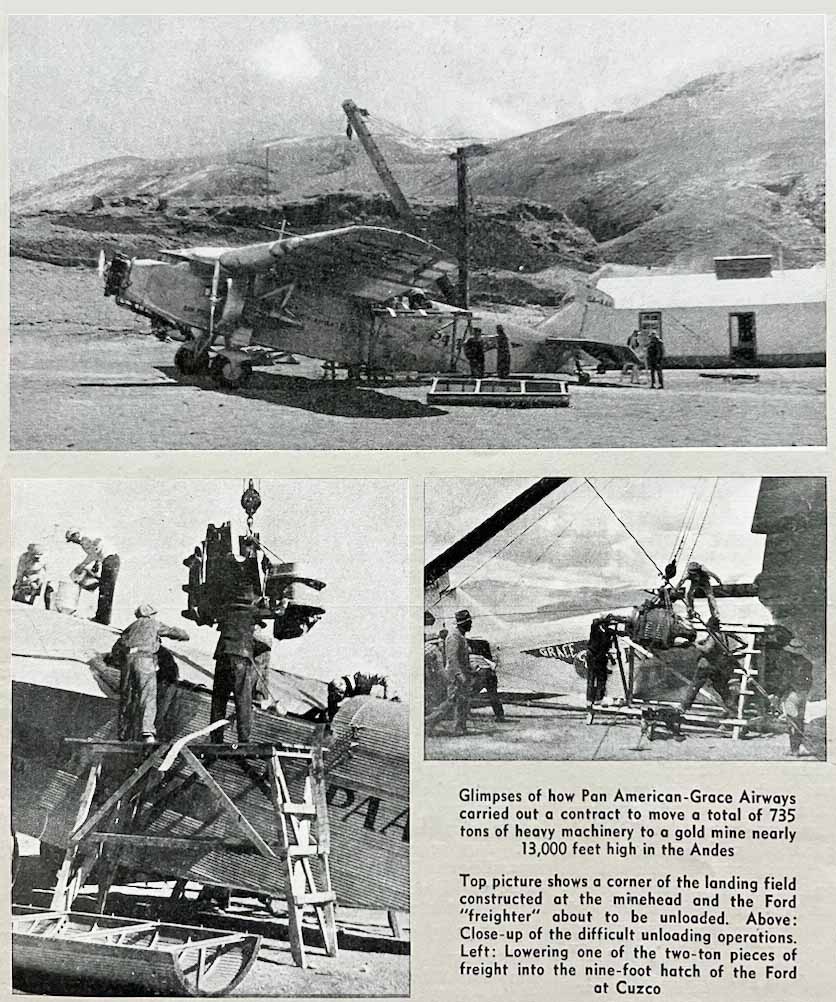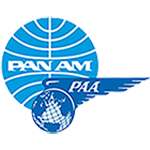DECEMBER 1934
"World's Largest Air Freight Contract"

Photos from Pan American Air Ways, Vol 5, No. 6,, September-October 1934, p. 6 (University of Miami Special Collections).
1934 was a year of great strides for Pan Am’s operations. A stellar example of this took place in August when Pan Am affiliate Pan American-Grace Airways successfully completed the world's largest air freight contract.
Over a period of months and with no delays, Panagra successfully transported 735 tons of mining machinery from Cuzco, Peru to the mine head at Huánaco Pampa in the Andes. Panagra proved the airline's capability to handle complex logistics under extreme flight conditions, and the efficiency of using air transport to cross challenging terrain. On land, the route would have traversed varied landscapes with steep ravines, requiring 7,300 mules and an average of 4-5 weeks to complete a round trip. Using air power, the mission was completed in just 425 flying hours.
The plane, a Pan Am Ford Tri-motor, could cover a distance of 50 miles between the two stations in the Andes in just 30 minutes with 5 round trips daily.
Panagra set a new benchmark for air freight operations.
The operation required a specially modified Pan Am Ford Tri-motor to leave Cuzco at an altitude of 10,900 feet and fly across the Andean Divide at 15,000 feet, to finally land at the mine head 12,675 feet above sea level.
Workers were specially trained to handle the expensive machinery. And the Ford Tri-motor was equipped for this monumental task with powerful Wasp engines. To expedite loading large machinery, a hatch (9.75 ft x 4.5 ft) was cut into the fuselage top. A trolley on rails and a hand winch were fitted into the interior of the plane to balance the load (average load: 2,345 pounds per flight). Electric heating units were used for quick engine starts in extreme cold.
Other innovations impacted the success of the Panagra mission: Electric flood lighting was installed at Cuzco airport for night operations, and radio ground stations at both terminals gave pilots real-time weather updates often alerting them of inclement weather that was apt to develop during afternoon flights.
The contract also included transporting equipment for a 1,500 horsepower hydro-electric installation at the mine and additional machinery for power plant expansion and mining operations.

